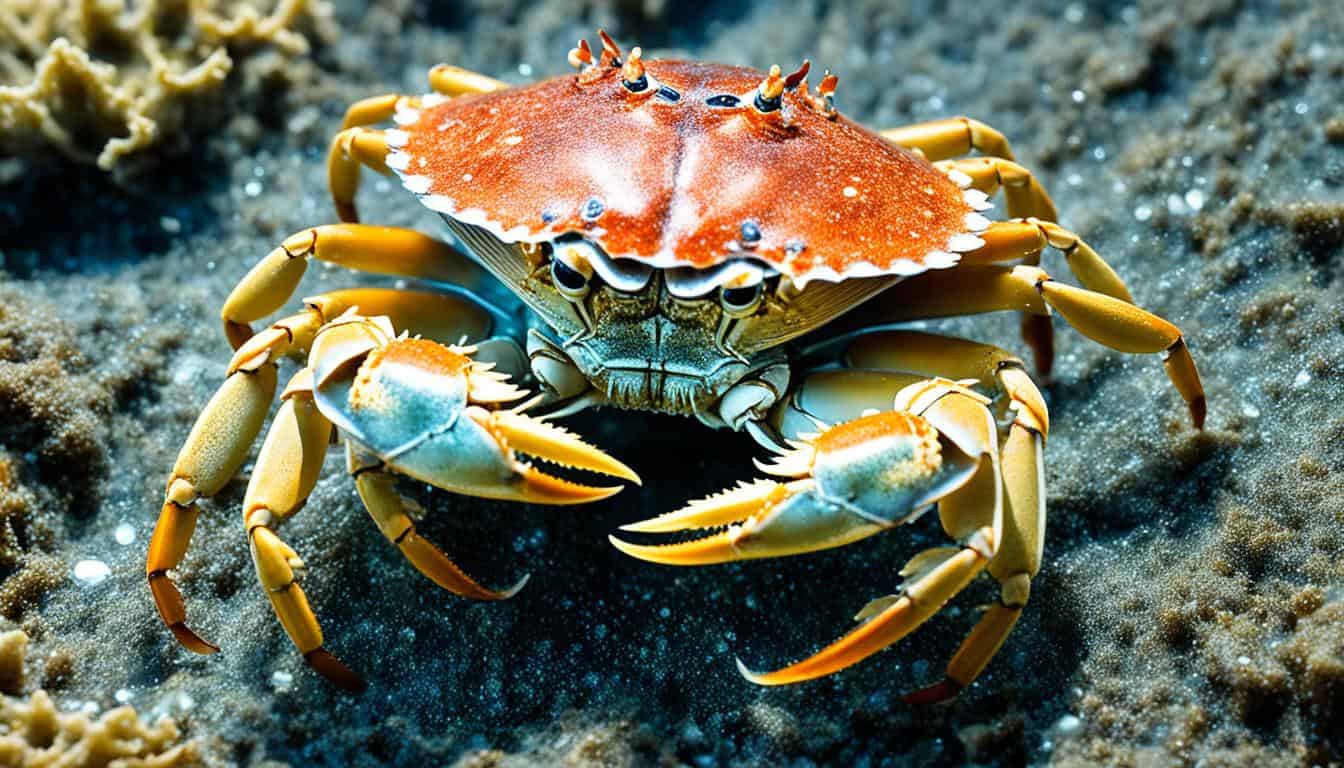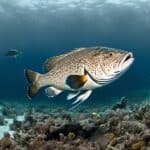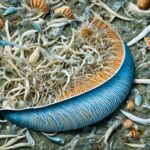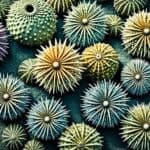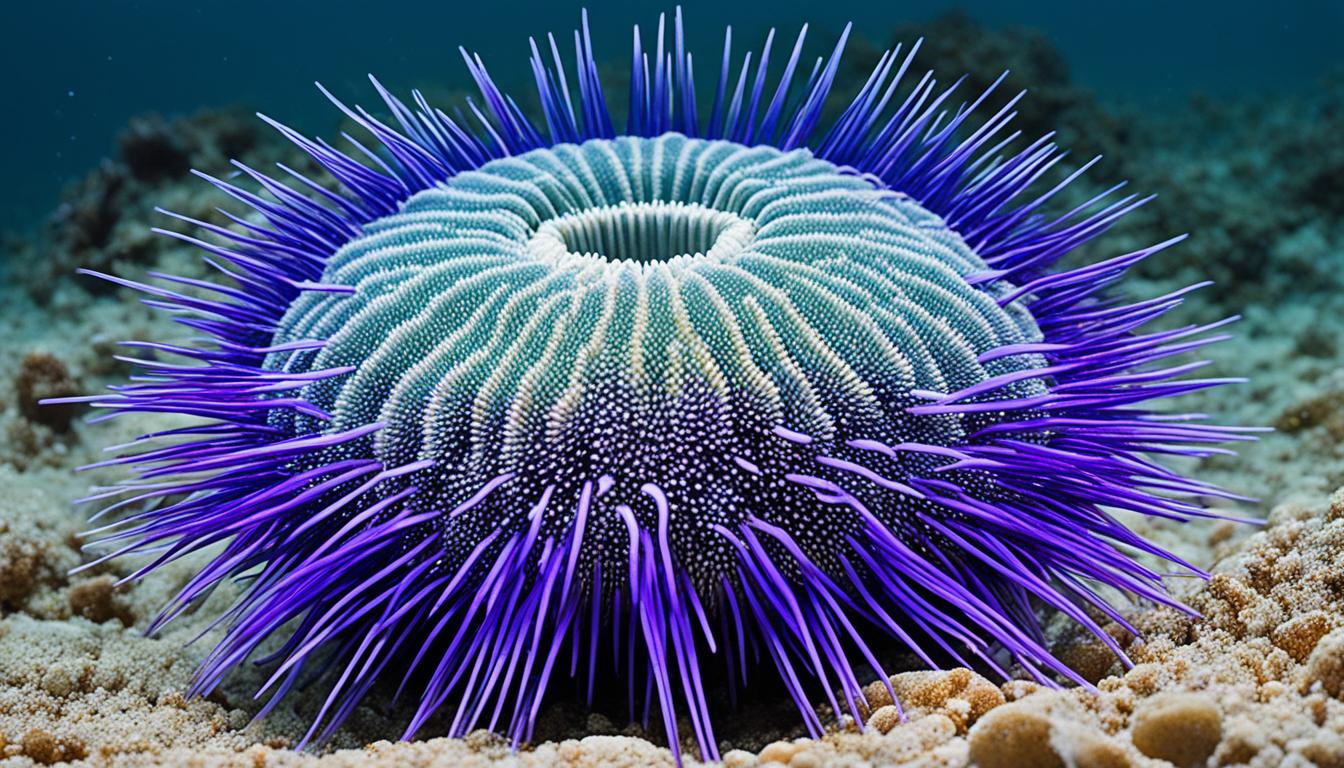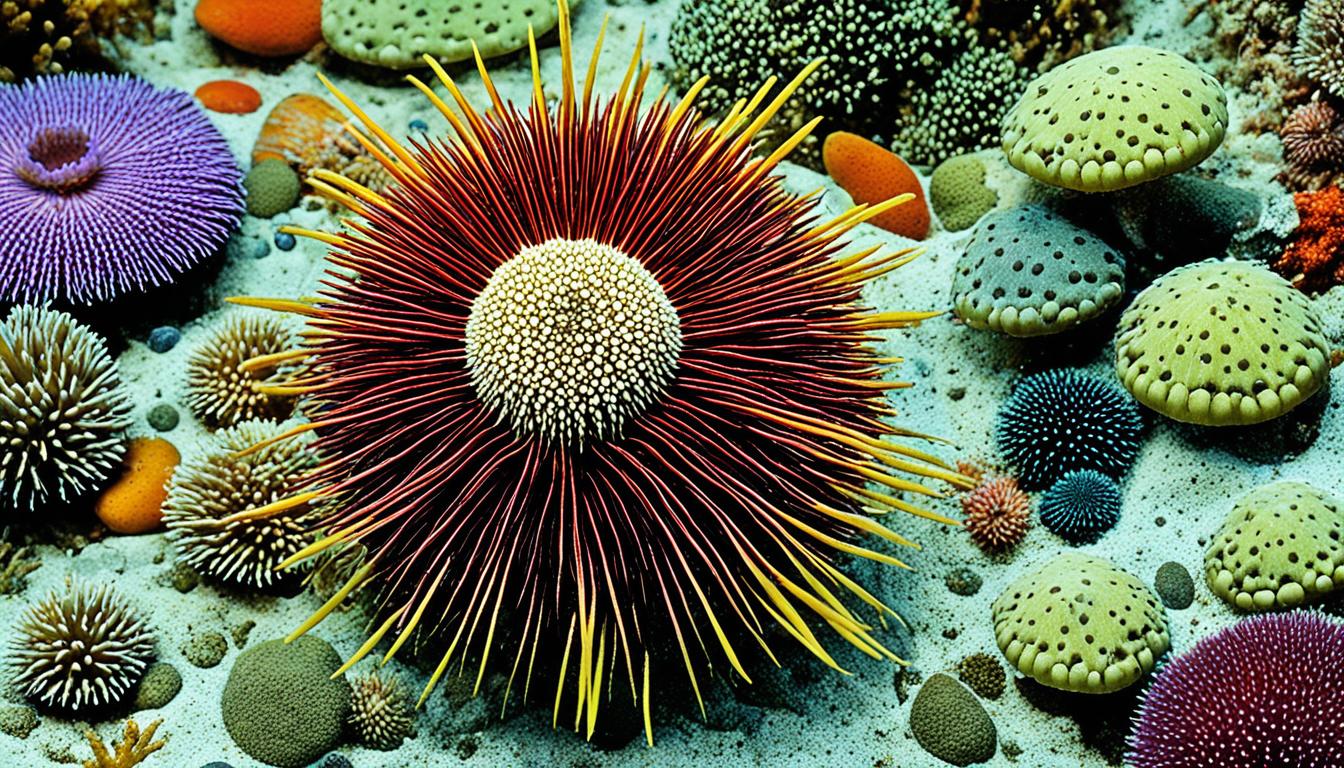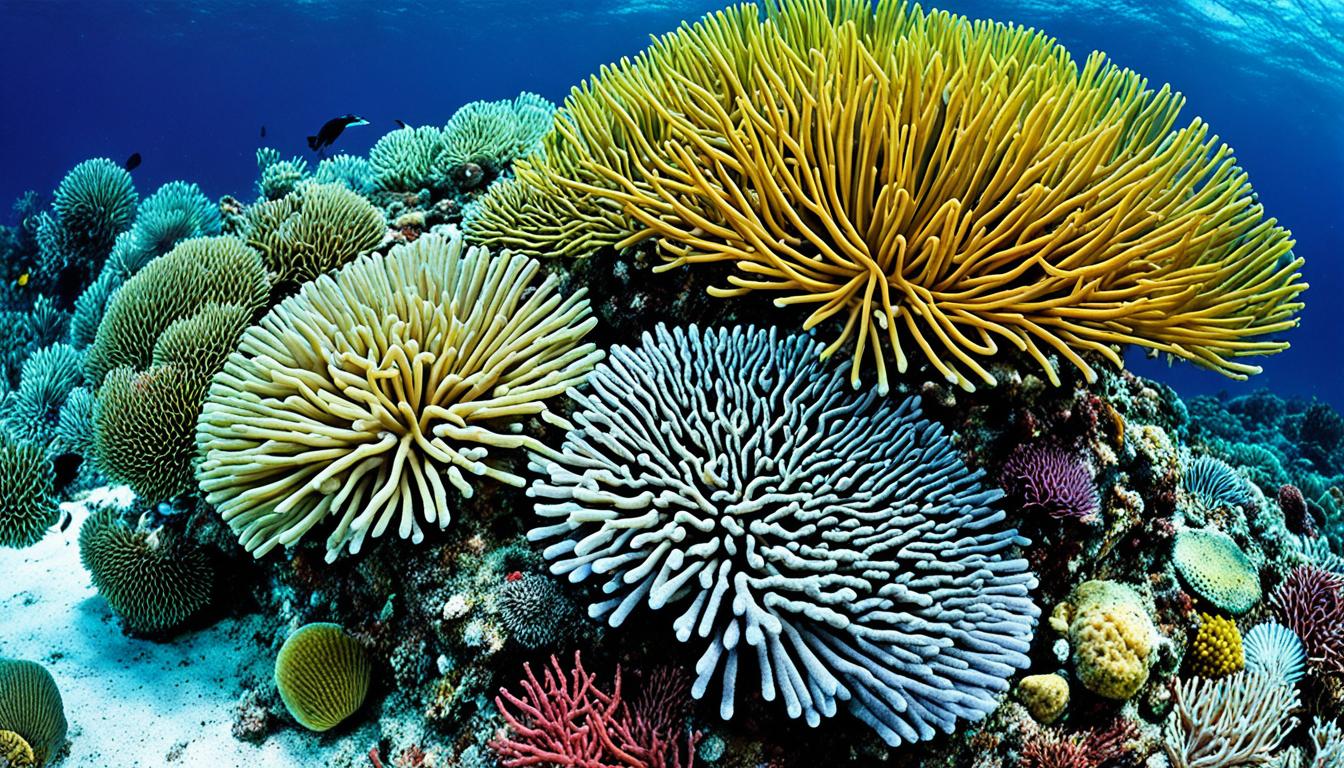Have you ever wondered how crabs shed their shells? It’s a key part of their life cycle, vital for growth and survival. Crabs, along with other crustaceans, go through a process called molting or ecdysis. This lets them get rid of their old shells.
But why is molting important? It helps crabs grow, get rid of parasites, and fix any damage to their bodies. By understanding how crabs molt, we learn more about these fascinating creatures and their lives in the ocean.
Understanding the Crab Shell Molting Process
The crab shell molting process is key to a crab’s life cycle. As they grow, they shed their exoskeleton to fit their new size. This process is complex and affects their development greatly.
Importance of Molting in Crab Growth
During molting, crabs can grow a lot, sometimes gaining up to 33% of their body weight. This growth helps them compete for resources and find mates better. It’s vital for their survival and how they adapt to their surroundings.
How Frequently Do Crabs Molt?
Crabs molt about once a month, but this can change with species and environment. Young crabs molt more often than older ones, showing they grow slower as they age. Things like water temperature and food availability affect how often they molt. Knowing this helps manage crab populations in the wild and in fisheries.
| Crab Species | Average Molting Frequency | Growth Rate per Molt |
|---|---|---|
| Southern Tanner Crab | Monthly | Up to 33% |
| Blue Crab | Bi-monthly | 25%-30% |
| King Crab | Every 9-12 months | 20%-25% |
How do crabs molt their shells?
The molting process in crabs is complex, focusing on calcium carbonate absorption from their old shells. This phase is crucial for a new shell. The crab gets ready to shed its old armor for a new one.
The Role of Calcium Carbonate Absorption
Crabs start by reabsorbing a lot of calcium carbonate from their old shells. This is key for making a new, strong shell. By taking back this calcium carbonate, crabs make sure their new shell is tough and can withstand the environment.
Secretion of New Shell Underneath
As molting approaches, crabs secrete enzymes to help separate the old shell from their skin. Underneath, a new, soft shell starts to form. This leads to the amazing sight of crab exoskeleton shedding. The crab then comes out with a new, soft shell that will harden later.
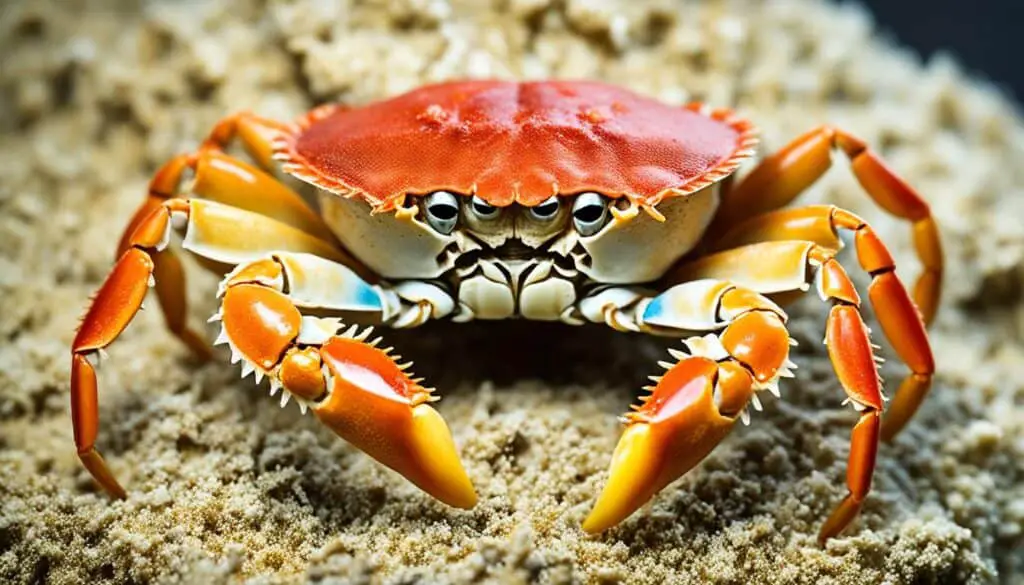
Stages of Crab Molting
The crab molting process has distinct stages, each crucial for growth and survival. These stages show how crabs change and adapt to their surroundings.
Pre-Molt Phase: Preparation for Molting
In the pre-molt phase, crabs get ready to shed their old shells. They drink seawater, swelling their bodies. This swelling creates pressure that splits the old shell at specific points.
The crab then absorbs minerals from the water. These minerals help form the new shell, setting the stage for a successful molt.
During Molting: Shell Shedding Process
Molting is a key event that takes about 15 minutes. The crab carefully gets out of its old shell. This step is crucial for growth.
After shedding, the crab shows its new, soft shell. This shell will harden over time, protecting the crab from predators.
Post-Molt Phase: Recovery and Hardening
After molting, the crab enters the post-molt phase. Its new shell is soft and vulnerable, making it a target for predators. The crab looks for a safe place to recover.
Over the next few days, the new shell hardens. This allows the crab to defend itself and move freely again.
| Stage | Characteristics | Duration |
|---|---|---|
| Pre-Molt Phase | Absorption of seawater, preparation for molting | Varies by crab species |
| During Molting | Shedding of old shell and emergence of new shell | Approximately 15 minutes |
| Post-Molt Phase | Soft new shell, focusing on recovery and hardening | Several days |
Crab Exoskeleton Shedding and Regeneration
Crab exoskeleton shedding is a complex and fascinating process. It’s vital for their growth and survival. When they molt, they shed their hard outer shell and remove old body parts like gills and pigment cells. This process keeps them healthy by getting rid of past injuries or parasites.
Removal of Old Parts and Growth of New Ones
During molting, the old exoskeleton is removed to make way for new, stronger body parts. This shedding is key for crab exoskeleton shedding. It ensures the new shell fits well and supports the crab’s growth and weight. The new shell hardens over days, giving the crab protection as it starts moving again.
Regeneration of Lost Limbs and Other Body Parts
Crabs can regrow lost limbs, showing their amazing ability for crustacean shell regeneration. Before shedding, a new limb bud forms at the lost limb’s joint. Over several molts, this new limb grows and eventually reaches its full size and function. This ability helps crabs recover from predators and adapt to their changing environments.
FAQ
How do crabs molt their shells?
Crabs molt their shells through a process called ecdysis. They shed their old exoskeleton to grow and get rid of parasites. This process involves taking back calcium carbonate from the old shell and making a new one underneath.
What is the importance of molting in crab growth?
Molting is crucial for crab growth. It lets crabs grow bigger than their shells can hold. For example, southern Tanner crabs can get up to 33% bigger after molting. This is important for understanding fish populations.
How frequently do crabs molt?
Crabs molt about once a month, but this can change based on the species and their environment. Young crabs molt more often than older ones. This is because they grow faster as they get older.
What are the stages of crab molting?
Crab molting has three stages. First, crabs absorb seawater to get ready to shed their shells. Then, they shed their old shell. Finally, the new shell hardens, and the crab recovers.
What happens during the removal of old parts in crabs?
When molting, crabs shed their old exoskeleton and remove parts like gills and pigment cells. This helps get rid of injuries or parasites from the old shell.
How do crabs regenerate lost limbs?
Crabs can regrow lost limbs. Before molting, a new limb bud forms at the joint. It grows back to full size over several molts. This lets crabs recover from losing a limb without slowing down their growth.

